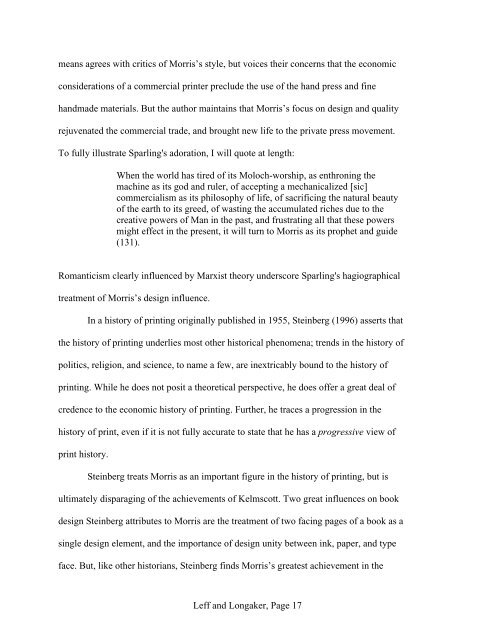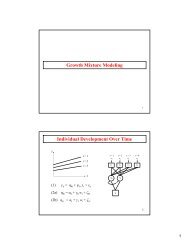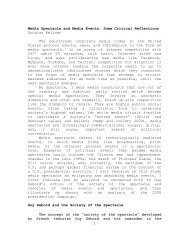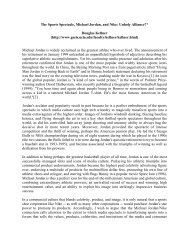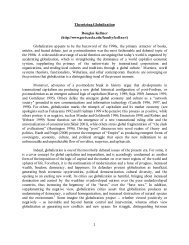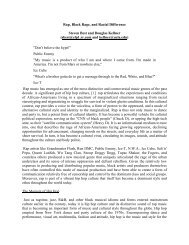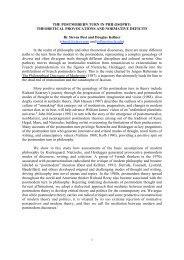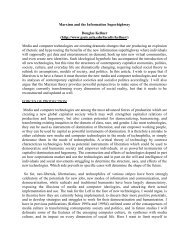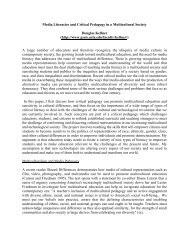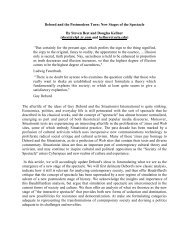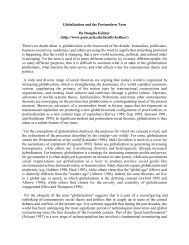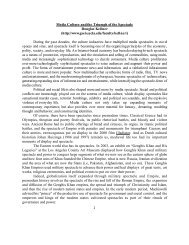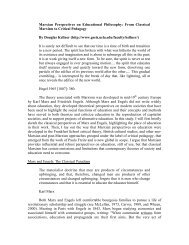Rachel Leff and Rachel Longaker IS281 Professor Maack ... - Ucla
Rachel Leff and Rachel Longaker IS281 Professor Maack ... - Ucla
Rachel Leff and Rachel Longaker IS281 Professor Maack ... - Ucla
You also want an ePaper? Increase the reach of your titles
YUMPU automatically turns print PDFs into web optimized ePapers that Google loves.
means agrees with critics of Morris’s style, but voices their concerns that the economic<br />
considerations of a commercial printer preclude the use of the h<strong>and</strong> press <strong>and</strong> fine<br />
h<strong>and</strong>made materials. But the author maintains that Morris’s focus on design <strong>and</strong> quality<br />
rejuvenated the commercial trade, <strong>and</strong> brought new life to the private press movement.<br />
To fully illustrate Sparling's adoration, I will quote at length:<br />
When the world has tired of its Moloch-worship, as enthroning the<br />
machine as its god <strong>and</strong> ruler, of accepting a mechanicalized [sic]<br />
commercialism as its philosophy of life, of sacrificing the natural beauty<br />
of the earth to its greed, of wasting the accumulated riches due to the<br />
creative powers of Man in the past, <strong>and</strong> frustrating all that these powers<br />
might effect in the present, it will turn to Morris as its prophet <strong>and</strong> guide<br />
(131).<br />
Romanticism clearly influenced by Marxist theory underscore Sparling's hagiographical<br />
treatment of Morris’s design influence.<br />
In a history of printing originally published in 1955, Steinberg (1996) asserts that<br />
the history of printing underlies most other historical phenomena; trends in the history of<br />
politics, religion, <strong>and</strong> science, to name a few, are inextricably bound to the history of<br />
printing. While he does not posit a theoretical perspective, he does offer a great deal of<br />
credence to the economic history of printing. Further, he traces a progression in the<br />
history of print, even if it is not fully accurate to state that he has a progressive view of<br />
print history.<br />
Steinberg treats Morris as an important figure in the history of printing, but is<br />
ultimately disparaging of the achievements of Kelmscott. Two great influences on book<br />
design Steinberg attributes to Morris are the treatment of two facing pages of a book as a<br />
single design element, <strong>and</strong> the importance of design unity between ink, paper, <strong>and</strong> type<br />
face. But, like other historians, Steinberg finds Morris’s greatest achievement in the<br />
<strong>Leff</strong> <strong>and</strong> <strong>Longaker</strong>, Page 17


